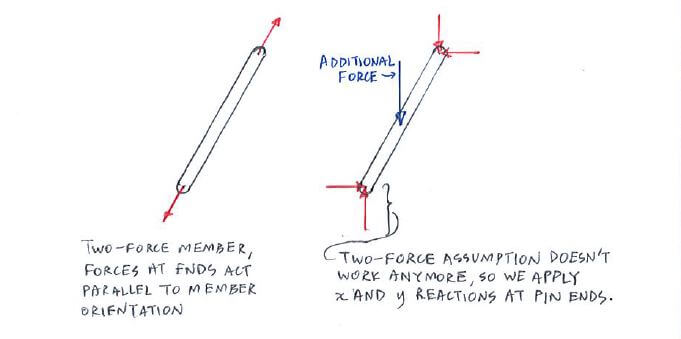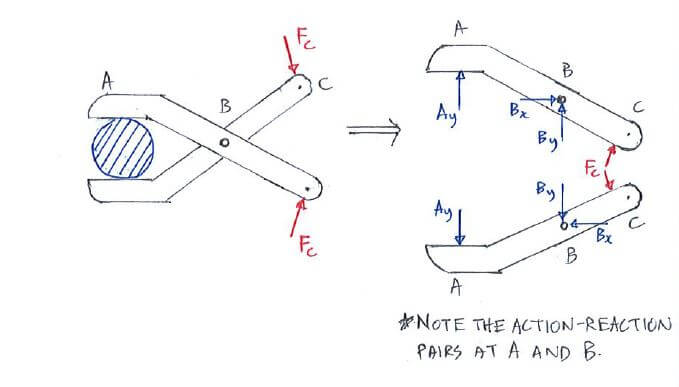C3.4 Frames and Machines
Frames are structures that consist of several members connected via pins. They are very similar to trusses, except that some members are multi-force members. Basically it’s a fancy way of saying they are not two-force members (trusses are), because of additional forces acting on it. Here’s an example:

C3.4 Frames and Machines
Frames are structures that consist of several members connected via pins. They are very similar to trusses, except that some members are multi-force members. Basically it’s a fancy way of saying they are not two-force members (trusses are), because of additional forces acting on it. Here’s an example:


